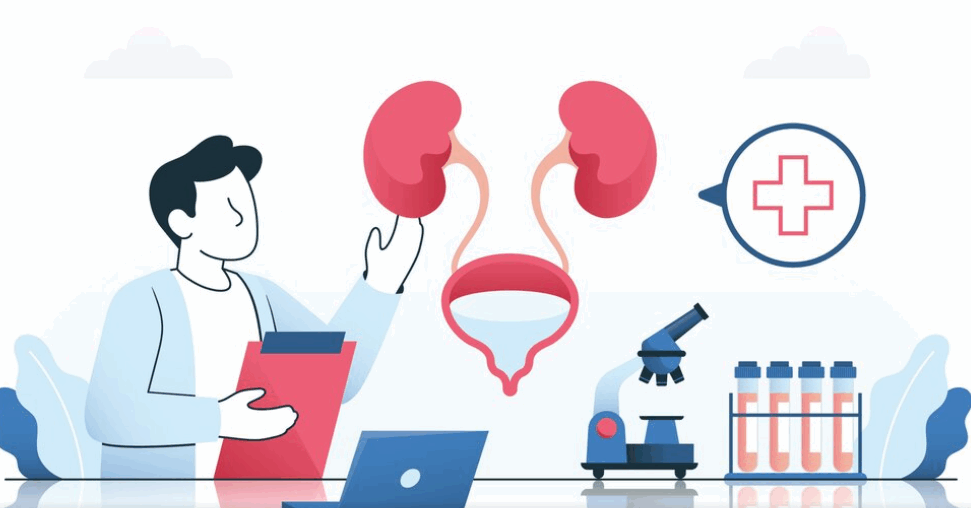As men grow older, they can feel some changes in their urinary and reproductive tracts. The most prevalent condition is one of benign prostate enlargement (BPE), also referred to as benign prostatic hyperplasia (BPH). The non-cancerous enlargement of the prostate gland will, over time, cause urinary symptoms, pain, and, in some instances, unforeseen ones such as testicular pain. So are these two symptoms related, or is the relationship coincidental?
Let’s investigate the possible connection between benign prostate enlargement and testicular pain, and what men need to know when these occur in combination.
Benign Prostate Enlargement: What It Is
The prostate is a small gland found below the bladder and wrapped around the urethra. Its main job is to supply seminal fluid, which feeds and carries sperm. With advancing age, changes in hormones—particularly testosterone and dihydrotestosterone (DHT)—can lead the prostate to grow slowly larger.
This growth can exert pressure on the urethra and bladder, leading to a variety of symptoms, including:
- Frequent urination, particularly at night (nocturia)
- Struggling to initiate urination
- Weak or intermittently interrupted urine stream
- Sensation of incomplete bladder emptying
- Urgency or dribbling following urination
Benign prostate enlargement is not cancerous, but its quality-of-life effects can be significant if left untreated.
What Causes Testicular Pain?
Testicular pain is pain in one or both testicles and may have a variety of causes. It can be sharp, aching, intermittent, or constant. Some of the more frequent causes are:
- Infections: Epididymitis (inflammation of the epididymis) or orchitis (inflammation of the testicle) secondary to bacterial or viral infection
- Injury or trauma: Direct blow to the testicles
- Testicular torsion: A surgical emergency in which the spermatic cord becomes twisted and cuts off blood supply
- Hernias: Inguinal hernias in particular, which may refer pain to the groin or testicles
- Varicocele or hydrocele: Vein swelling or fluid collection in the scrotum
- Referred pain: Pain that arises from elsewhere like the kidneys, prostate, or lower back
With such a broad range of potential causes, determining the origin of testicular pain demands a thorough assessment.
Is There a Link Between Benign Prostate Enlargement and Testicular Pain?
Though benign prostate hyperplasia and testicular pain causes might at first glance have nothing in common, they are indirectly related in several important respects:
- Referred Pain from the Prostate
Occasionally, testicular pain is not coming from the testicles themselves. Due to the intimate anatomical and nerve relationship between the prostate and the scrotum, benign prostatic hyperplasia can result in referred pain. The prostate and testicles have a shared nerve pathway, particularly through the pelvic plexus, so that pain in the prostate can manifest as testicular pain.
- Urinary Tract Infections (UTIs) or Prostatitis
Men with benign prostatic hyperplasia (BPH) commonly have incomplete bladder emptying, which predisposes to urinary tract infections. A UTI or related prostatitis may extend to the epididymis or testicle, producing testicular pain and swelling.
- Chronic Pelvic Pain Syndrome (CPPS)
Occasionally classified as a type of chronic prostatitis, CPPS is a condition characterized by ongoing pelvic pain without definitive infection. CPPS-like symptoms such as pain in the perineum, lower abdomen, and testicles can also be experienced by men who have benign prostate enlargement.
When to Seek Medical Attention
If you have pain in the testicles, particularly in combination with symptoms of non-cancerous enlargement of the prostate, it is important to see a doctor. Severe, unexpected testicular pain may be a sign of a serious medical condition like testicular torsion, while ongoing discomfort can be a sign of underlying infection or inflammation.
You should get medical attention if you experience:
- Worsening or persistent pain
- Swelling or redness of the scrotum
- Fever or chills (potential sign of infection)
- Blood in the urine or urinary retention
- Ejaculatory pain or sexual dysfunction
The doctor might opt for a combination of physical examination, ultrasound scan, urinalysis, or even prostate-specific antigen (PSA) test to ascertain the cause.
Treatment and Management
The management of benign prostate enlargement usually alleviates associated symptoms, such as testicular pain if related. The treatment may involve:
- Lifestyle modification: Caffeine reduction, alcohol reduction, fluid restriction prior to bedtime
- Medications: Muscle relaxants such as alpha-blockers or shrinking medications like 5-alpha-reductase inhibitors
- Minimally invasive techniques: Transurethral microwave therapy (TUMT) or laser treatment
- Surgery: In major conditions, operations such as transurethral resection of the prostate (TURP) can be advised
If pain in the testicles is identified to be due to another illness like epididymitis, antibiotics and anti-inflammatory drugs can be administered.
Conclusion
While benign prostatic hypertrophy and testicular pain are different entities, they can be interrelated via common anatomy, nerve distribution, or complications such as infection. Any persistent or severe testicular pain cannot be taken lightly. A proper medical examination can identify the underlying cause and provide effective treatment.
Knowledge of the possible overlap in these symptoms can enable men to take prompt action and enhance their overall urologic well-being.



